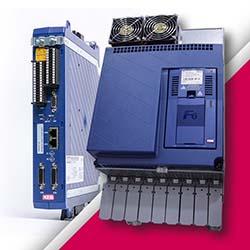Smart Plastic Materials for Flexible Electronics Could Be a Game Changer

Researchers have worked over the last few decades to develop the next generation of electronics. The ultimate goal is to make components flexible and conformable, allowing new types to hit the market.
New developments in materials for flexible electronics could propel the research field forward and serve as a game changer for numerous applications.
An Overview of Flexible Electronics
Decades ago, early iterations of flexible electronics consisted of silicon wafers used for solar cells in satellites. The first flexible solar cells emerged in the 1960s, supporting the space race and launching further research. Since then, researchers have discovered new materials to incorporate into flexible electronic components, like circuit boards and wiring.
Conventional electronics do not have the properties required for certain devices. For example, some of the characteristics of flexible electronics are bending, stretching, folding and rolling.
Typically, circuit boards break or delaminate when manipulated, bent or stretched. Scientists and engineers sought to find pliable materials with flexibility to power different types of electronically controlled or powered devices.
New Developments in Smart Plastics Show Promise for Flexible Electronics
A few breakthroughs in flexible electronics technology include smart plastic materials. Two teams — one at the University of Texas at Austin and the other at the National University of Singapore — recently described their discoveries regarding smart plastics.
Here’s more about the teams’ research projects and what new technologies they’ve created to make progress in materials for flexible electronics.
National University of Singapore
In 2016, a team of researchers from the National University of Singapore (NUS) collaborated with peers from Yonsei University, Ghent University and Singapore’s Institute of Materials Research and Engineering to effectively embed a magnetic memory chip in PET (polyethylene terephthalate).
PET is a flexible material that can be bent into different shapes without compromising the integrity of the electronic components. These magnetic memory devices are fundamental for data storage capabilities and processing, particularly in wearable and biomedical technology. The machine created by NUS operates on magneto-resistive random access memory (MRAM), which consists of a magnesium oxide-based magnetic tunnel junction (MTJ).
The MTJ stores the data on the device. MRAM outperforms RAM (random access memory) in a few ways, such as retaining information even after a power supply is cut off. It also has high processing speeds and low power consumption.
Yang Hyunsoo, lead researcher and associate professor of the Department of Electrical and Computer Engineering at the NUS Faculty of Engineering, claims the device’s tunneling magneto-resistance could reach up to 300%. Hyunsoo compares it to a car having extraordinary horsepower.
The University of Texas at Austin
More recently, a team of researchers at The University of Texas at Austin developed a new, plastic-like material inspired by living things such as trees and shellfish. These organisms possess hard and soft tissues, which helped guide the team in their research.
The team at UT at Austin made the material, which is 10 times more durable than natural rubber and could be used for flexible electronics and robotics. Interestingly, the molecules could be manipulated to be hard and rigid or soft and pliable. The researchers only used light and a catalyst to change its properties.
The chemists on the team started with a monomer. After analyzing a dozen catalysts, they discovered one that could resemble a semicrystalline polymer like the ones in synthetic rubber when combined with its monomer.
According to Zachariah Page, study corresponding author and assistant professor of chemistry, the material is the first of its kind. Page believes the unique development could be used for wearables and actuators in soft robotics.
Applications for Flexible Electronics
Flexible and flexible hybrid electronics (FHEs) are growing in popularity because they provide many benefits and can be used in various applications. Here are some examples of the top applications that flexible electronics could revolutionize.
Medical Devices
The health care field is ripe for innovation, so flexible electronics would offer several benefits to physicians, surgeons and other medical professionals. Developments in flexible electronics show promise for potential uses in skin sensors, which can monitor physiological signs and signals like temperature and stress sensors. Wearable devices in medicine are the next big thing, but they must leverage flexible electronics or FHEs to become more intuitive.
Biometrics
Another area that could benefit from flexible electronics is biometric research. Biometrics are body measurements and characteristics unique to each individual and consist of fingerprints, facial features, voices and irises. A key aspect of authenticating someone’s identity is capturing their fingerprints, and flexible arrays with sensors are the best way to do so. Arrays can also image veins, which helps protect the fingerprint.
Automotives
Flexible electronics have several uses in the automotive industry. Many manufacturers have begun incorporating flexibles into their cars, from the steering wheel to the displays. These electronics can be used to adjust seat height, serve as authentication to ensure the driver owns the vehicle and change music. Additionally, in the event of an accident, flexible-based displays and other components are safer than glass-based alternatives.
The Future of Flexible Electronics
There are a few trends in flexible electronics to be aware of:
- Conductive inks
- Structural electronics
- FHEs
- In-mold electronics
All these areas under the flexible electronics category will likely gain traction in the coming years. The possibilities are endless with more developments like those made at The University of Texas at Austin and the National University of Singapore. By 2030, it’s estimated that the flexible electronics market will surpass $61 billion, as industries like energy and power, aviation, consumer electronics and health care will make hefty investments in these revolutionary materials.
More R&D Is Needed to Develop Materials for Flexible Electronics
Additional research and development is needed to fully incorporate materials for flexible electronics into more industries and manufacturing facilities. They will provide a slew of benefits to all types of industries. It’ll be interesting to see how the new developments outlined above will impact the flexible electronics industry and what innovations crop up.
Comments (0)
This post does not have any comments. Be the first to leave a comment below.
Featured Product

